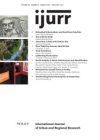Traffic congestion and transit service deterioration are becoming acute problems in China’s major cities. Based on a case study of Shanghai, this paper examines the growing gap between the supply of urban transportation facilities and the demand for travel, and discusses the planning implications. Because it will take great amounts of time and resources to transform the municipal transportation infrastructure into one suitable for high level mobility and motorization, the supply side is constrained for the short term. Therefore, planning research is directed primarily to the demand side. Transportation surveys indicate that travel demand has been increasing explosively through a combination of more trips, longer trips, and mode shifts away from walk and transit. Population growth, growth of family income, urban expansion and spatial reconfiguration, the emergence of labor and housing markets, and motorization are identified as the main causal factors. The probable future effects of these factors are analyzed and policy options are explored. The paper argues that enhancing accessibility without inducing mobility should be a basic guideline for policy‐making and urban planning. Given the fast pace of urban development and the important role of the municipal government in locating urban activities, land‐use planning can be a highly effective means for improving accessibility. Specific land‐use strategies and complementary policies are proposed. Since Shanghai is in some important ways representative of large metropolises in the developing world, the case study is potentially valuable for other cities as well.
Details
Written by:
Qing Shen
Digital Object Identifier (DOI)
10.1111/1468-2427.00103
About DOI
Read full article as PDF
Read full article as HTML
See the references for this article
